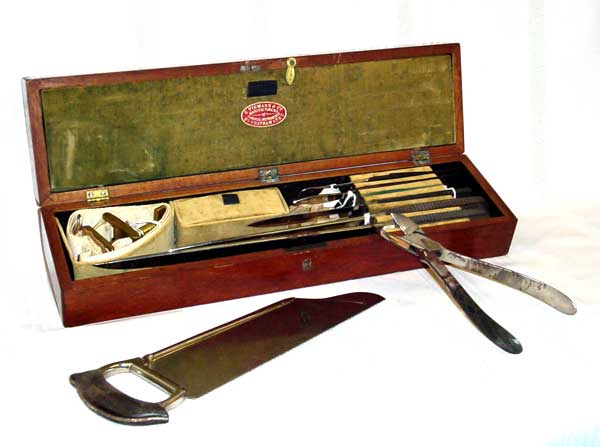Inventory Number: 2004.119.01.01 Manufactured by George Tiemann and Co., New York, this amputation case contains a tourniquet, several saws and suture materials. This set was probably owned by Dr. Septimus Thompson, grandson of Dr. Peter Stewart and father of Dr. Charles Thompson. Sepitums Thompson specialized in opthalmology and otolaryngology, and taught these subjects at Western University in the early 20th Century. Prior to the widespread use of anesthesia and the professionalization of the field in the late 19th century, a successful surgery depended upon a sturdy hand and a sharp knife. Operations lacked precision, were slow, painful, and often dangerous for the patient. Without proper sanitation of the workspace or tools, infection of the wound was often inevitable, resulting in amputation or death. Amputation was particularly rapid on the battlefield, such as in the first world war. New weapons inflicted previously unwitnessed physical destruction on soldiers through shrapnel, while trenches were a prime location to develop malicious conditions due to lack of sanitation. Small wounds quickly developed irreversible and life threatening infections, resulting in the amputation of limb or limbs. As a result of the conditions and circumstances of war, surgical techniques, reconstructive surgery and management of compound fractures all drastically advanced.Featured Artifact
Amputation Set Case, 19th Century

You are using a browser that is not standards-compliant. The information on this Web site will be accessible to you, but for a list of Web browsers that comply with the World Wide Web Consortium standards, please visit our Web standards page.

